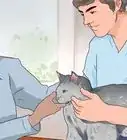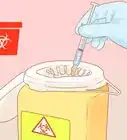This article was co-authored by Lauren Baker, DVM, PhD. Dr. Lauren Baker is a Veterinarian and Assistant Scientist at the University of Wisconsin-Madison. With over 10 years in veterinary medicine, she specializes in the concept of “one health,” which uses insights from veterinary medicine to help human medical research. She holds a Ph.D. in Comparative Biomedical Sciences, a Doctor of Veterinary Medicine, an MS in Comparative Biomedical Sciences, and a Bachelor’s degree in Psychology from the University of Wisconsin-Madison.
wikiHow marks an article as reader-approved once it receives enough positive feedback. This article received 32 testimonials and 87% of readers who voted found it helpful, earning it our reader-approved status.
This article has been viewed 1,008,496 times.
If your cat has a cold, you might be worried about it. Colds in cats are minor respiratory infections, but they still need to be treated. Your sick kitty needs your care to feel better. Fortunately, treating a cat with a cold is easier than it seems.
Steps
Caring for Your Cat at Home
-
1Identify the symptoms. Cold symptoms in a cat can be caused by a bacterial infection or a virus.[1] Look for symptoms which may include sniffing, sneezing, a runny nose, pus-like discharge around the eyes, difficulty breathing, and lethargy which can all point to a cold.[2]
- In rare cases, your cat may also have a cough.
-
2Keep your home humid. Increased humidity will help with your cat's breathing while they're sick. Use a humidifier, if you have one, or confine your cat to a steamy bathroom a few times a day for 10 to 15 minutes at a time. [3]
- Some cats may dislike being confined. Many will cry and/or scratch at the door to get out. If your cat does this for longer than 3-5 minutes, don't force them. That can cause stress exacerbating the illness and prolonging recovery.
Advertisement -
3Clean your cat's face. When your cat is sick, you may notice discharge around their eyes, nose and ears. A few times a day, take a damp washcloth and gently wash your cat's face all the while murmuring soothing words.[4] Cats react to the tone in your voice and it may help keep them calm while you do this, unpleasant to them, chore.
- Use warm water. Make sure the water you use is not extremely hot or cold as this can shock your cat's system.
-
4Encourage your cat to eat. If your cat is sick, it may not want to eat. However, it's important they get the nutrients they need to stay strong during an illness. Cats will often lose their appetite when sick walking away from food they would have happily devoured yesterday. If your cat is not interested in eating, try warming it a little in the microwave for a few minutes. This will create a stronger smell and may entice your cat to eat. You can also try providing your cat with a special, tasty food that it may be more likely to eat.[5]
- You can also try adding some water to the food to make it easier for the cat to eat.
-
5Separate other household pets. If you have other pets, you may need to separate them. Infections such as these are contagious within the incubation period which can be from between 2-10 days.[6]
- Your pet is also probably lethargic and will eat slower than normal. Keeping other animals at a distance during feeding time will reduce the chance that they take the sick cat's food before they're finished eating.
-
6Provide plenty of water. Make sure fresh, clean water is out at all times. A sick cat needs to keep hydrated. Pay attention to the water bowl and refill and /or clean as necessary.
- Adding water to canned food can help keep your cat hydrated.
- Signs of dehydration include sunken eyes, “tacky” gums, and decreased skin elasticity.
Seeking Veterinary Care
-
1Determine if your cat needs to see a vet. Generally, infections can last from 7-21 days. Often, a minor infection will clear up on its own. Under certain circumstances, however, you should seek a veterinarian.
- If your cat's cold does not clear up within a 5-7 days, see a vet.
- You should also see a vet if your cat is dehydrated, not eating, or having difficulty breathing.[7]
-
2Be sure to have tests done to figure out the underlying cause. A variety of diseases can cause cold-like symptoms in a cat. Depending on your cat's other symptoms and risk factors, your vet should test for other conditions. Don't hesitate to Talk to your vet about the tests needed to diagnose and treat your cat.[8]
- A complete blood count should be done to rule out any blood-related conditions.
- Chemistry tests to evaluate the function of organs like the liver and kidneys and
- Electrolyte tests may be administered to check for dehydration and imbalance.
- Urine tests to check for urinary tract infections and kidney issues.
- And if your vet suspects something more serious, they may test for feline immunodeficiency virus (FIV) or feline leukemia (FeLV).
-
3Be sure to give your cat any medications needed. Depending on the underlying cause of your cat's symptoms, your vet may prescribe medications. If they do, administer it exactly as instructed. Ask your vet any questions you have about the medication before leaving the office. Make sure to give your cat a full round of the medication prescribed, even after symptoms pass.
Preventing a Recurrence
-
1Give your cat vitamin C. Unlike humans, cats can make their own vitamin C.[9] However, a Vitamin C supplement can help your cat recover from some medical conditions, such as a cold.
- Talk to your vet about giving your pet this supplement. But be sure that they have no history of urinary oxalate stone formation (crystals). Vitamin C may not be right for all pets.[10]
- Do not administer vitamin C without talking to your vet first, especially if your cat has underlying health conditions or is on any medications.
-
2Get your cat vaccinated. Keep up to date with your cat's vaccinations. Vaccinations helps prevent common diseases and infections that can lead to colds and cold-like symptoms. Check with your vet once a year to see if your cat is due for any vaccines.
-
3Keep your cat indoors. Cats usually get colds from contact with other cats. The best way to prevent this is to minimize their contact with outside animals. Keep your cat indoors and away from strange, possibly unvaccinated, cats. If they simply must be outside from time to time, try to keep a close eye on them.
How Can I Help My Cat Breathe Easier?
Expert Q&A
Did you know you can get premium answers for this article?
Unlock premium answers by supporting wikiHow
-
QuestionIt's winter, and my cat has warm ears. He has a heated home, so I'm kinda confused. When he sleeps, he makes little mucus sounds when he breathes, but I don't see nasal discharge yet. Do I wait to see if he's sick, or do I take him right away to the vet?
 Lauren Baker, DVM, PhDDr. Lauren Baker is a Veterinarian and Assistant Scientist at the University of Wisconsin-Madison. With over 10 years in veterinary medicine, she specializes in the concept of “one health,” which uses insights from veterinary medicine to help human medical research. She holds a Ph.D. in Comparative Biomedical Sciences, a Doctor of Veterinary Medicine, an MS in Comparative Biomedical Sciences, and a Bachelor’s degree in Psychology from the University of Wisconsin-Madison.
Lauren Baker, DVM, PhDDr. Lauren Baker is a Veterinarian and Assistant Scientist at the University of Wisconsin-Madison. With over 10 years in veterinary medicine, she specializes in the concept of “one health,” which uses insights from veterinary medicine to help human medical research. She holds a Ph.D. in Comparative Biomedical Sciences, a Doctor of Veterinary Medicine, an MS in Comparative Biomedical Sciences, and a Bachelor’s degree in Psychology from the University of Wisconsin-Madison.
Veterinarian
-
QuestionMy cat sneezes a few times per day and it's not as active as it used to be, is it sick or not?
 Lauren Baker, DVM, PhDDr. Lauren Baker is a Veterinarian and Assistant Scientist at the University of Wisconsin-Madison. With over 10 years in veterinary medicine, she specializes in the concept of “one health,” which uses insights from veterinary medicine to help human medical research. She holds a Ph.D. in Comparative Biomedical Sciences, a Doctor of Veterinary Medicine, an MS in Comparative Biomedical Sciences, and a Bachelor’s degree in Psychology from the University of Wisconsin-Madison.
Lauren Baker, DVM, PhDDr. Lauren Baker is a Veterinarian and Assistant Scientist at the University of Wisconsin-Madison. With over 10 years in veterinary medicine, she specializes in the concept of “one health,” which uses insights from veterinary medicine to help human medical research. She holds a Ph.D. in Comparative Biomedical Sciences, a Doctor of Veterinary Medicine, an MS in Comparative Biomedical Sciences, and a Bachelor’s degree in Psychology from the University of Wisconsin-Madison.
Veterinarian
-
QuestionWhat temperature is a cat usually and what temperature is a cat with a cold?
 Lauren Baker, DVM, PhDDr. Lauren Baker is a Veterinarian and Assistant Scientist at the University of Wisconsin-Madison. With over 10 years in veterinary medicine, she specializes in the concept of “one health,” which uses insights from veterinary medicine to help human medical research. She holds a Ph.D. in Comparative Biomedical Sciences, a Doctor of Veterinary Medicine, an MS in Comparative Biomedical Sciences, and a Bachelor’s degree in Psychology from the University of Wisconsin-Madison.
Lauren Baker, DVM, PhDDr. Lauren Baker is a Veterinarian and Assistant Scientist at the University of Wisconsin-Madison. With over 10 years in veterinary medicine, she specializes in the concept of “one health,” which uses insights from veterinary medicine to help human medical research. She holds a Ph.D. in Comparative Biomedical Sciences, a Doctor of Veterinary Medicine, an MS in Comparative Biomedical Sciences, and a Bachelor’s degree in Psychology from the University of Wisconsin-Madison.
Veterinarian
References
- ↑ http://www.pethealthnetwork.com/cat-health/cat-diseases-conditions-a-z/feline-upper-respiratory-infection
- ↑ https://www.vetinfo.com/natural-remedies-cat-cold.html
- ↑ http://www.pethealthnetwork.com/cat-health/cat-diseases-conditions-a-z/feline-upper-respiratory-infection
- ↑ http://www.pethealthnetwork.com/cat-health/cat-diseases-conditions-a-z/feline-upper-respiratory-infection
- ↑ https://www.vetinfo.com/cat-cold-home-remedies.html
- ↑ http://www.pethealthnetwork.com/cat-health/cat-diseases-conditions-a-z/feline-upper-respiratory-infection
- ↑ http://www.catcare.com/publications/oc-register-112309.pdf
- ↑ http://www.pethealthnetwork.com/cat-health/cat-diseases-conditions-a-z/feline-upper-respiratory-infection
- ↑ http://www.petmd.com/blogs/thedailyvet/ktudor/2012/sept/vitamin_c_and_calcium_oxalate_stones-27000
About This Article
To treat a cat with a cold, make sure it has plenty of access to fresh water so it doesn't get dehydrated. You should also encourage your cat to eat by warming up its food in the microwave or adding treats to its food to make it taste better. Also, use a humidifier or steamy shower to keep your home humid since it will make it easier for your cat to breathe. If your cat's cold doesn't clear up within a week, or if your cat isn't drinking or eating, take it to the vet as soon as possible. To learn how to prevent your cat from getting a cold, scroll down!
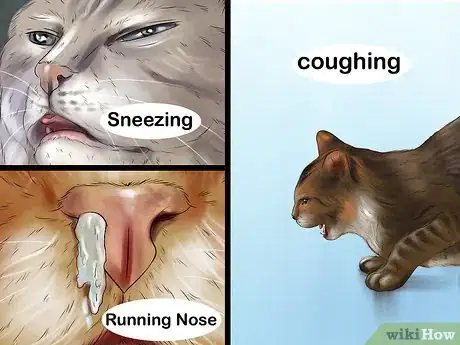
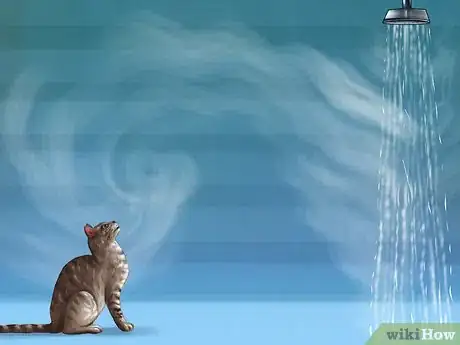




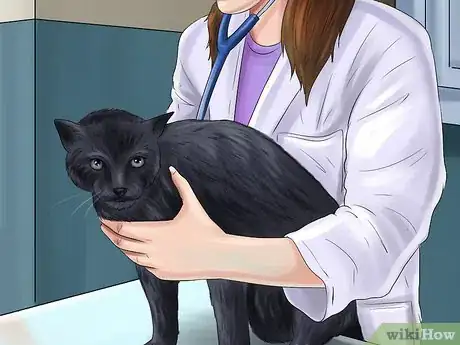
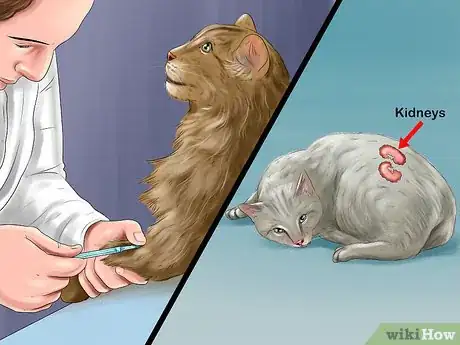


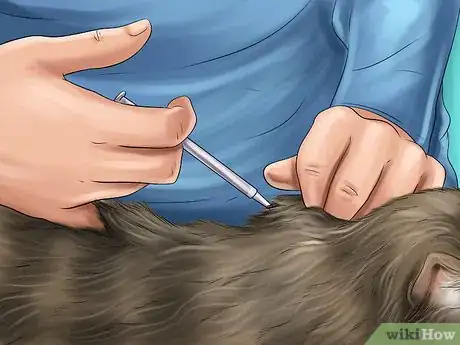
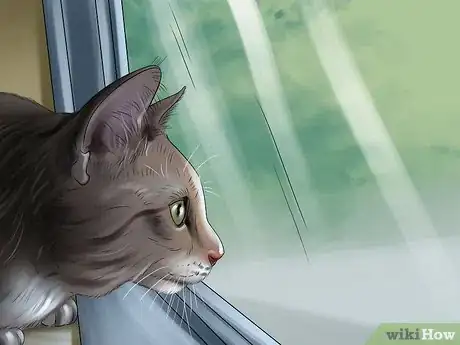
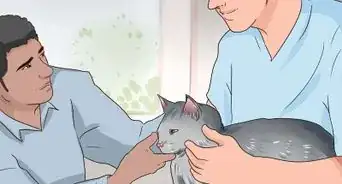

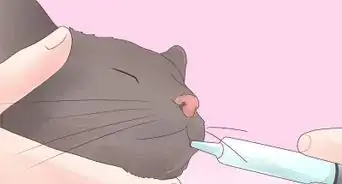
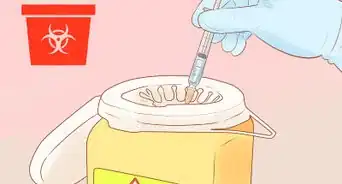

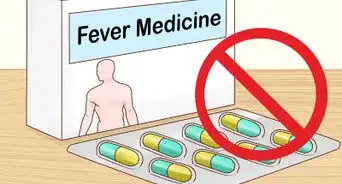




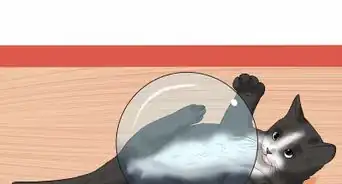
-Step-18.webp)

-Step-12.webp)










